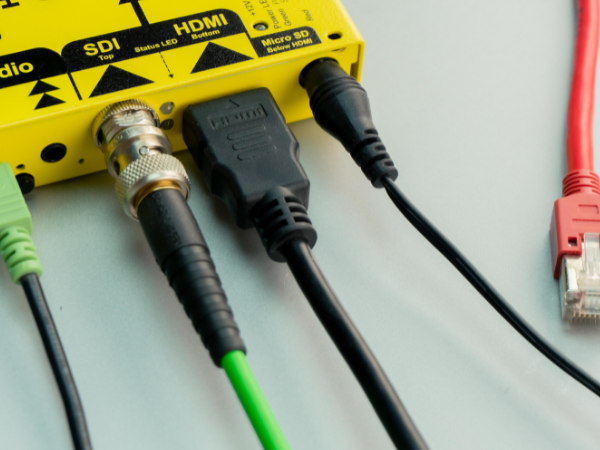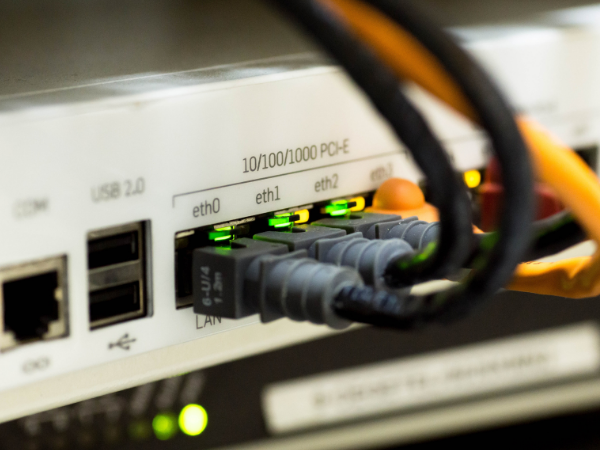HDMI vs DisplayPort – key differences and options
Building a gaming PC involves a lot of decisions, like choosing between HDMI vs DisplayPort. You need the cable that can deliver the best video and audio for your new gaming rig. HDMI and DisplayPort are the top choices right now, and you have to choose carefully. Otherwise, you won’t get the best quality for your gaming experience.
Get the right one, and your device will show the crispest graphics with the highest resolution. If you don’t, your screen will display blurry images with laggy movement. This isn’t just about buying the most expensive cable, though. You will need to know the exact type of DisplayPort or HDMI connector too!
We’ll start by emphasizing just how important choosing the right cable is for your gaming PC or other devices. Then, we will give more details about these cables, such as the types available and their uses. After that, we will compare HDMI vs DisplayPort. We will also explain how to manage your cables so your gaming space is free of clutter.
Why choose between HDMI and DisplayPort?

When you see a gaming rig featured in a YouTube video, your eyes were probably drawn to the RGB lighting, and you probably never paid much attention to the cables.
It’s the component that’s awkwardly hidden behind your desk. If not, you probably remember arranging it as a massive hassle. Yet, those rubber noodles play a huge role.
Cables connect your PC to the external components, specifically the monitor. It feeds data from your PC to that screen, so it can display the game you’re playing.
Before HDMI and DisplayPort, PCs needed separate cables for the speakers and the monitor. If you’re struggling with cable management now, try doing that decades ago!
Thanks to these newer cables, video, and audio go through the same tube. Yet, your choice between HDMI vs DisplayPort boils down to what device you will use.
Also, there are different types of each cable. You have to match it with your current gadget, though. Otherwise, you will likely waste money or miss out on quality.
What is HDMI?
If you’ve never seen an HDMI cable, check the back of your TV. Chances are, it’s the cord that connects your Cable box to your flat screen.
If you have an Xbox Series X or a PS5, it connects your console to the TV or the gaming monitor. Check the tip, and you’ll see the symmetrical metal connector with 19 pins inside.
It comes in three types represented by a number. The higher it is, the greater the sound and audio quality. Here are the types of HDMI cables you can buy right now:
- 1.4 – Consider this the most basic option for HDMI cables, and it can provide 720p or 1080p resolution and a maximum bandwidth of 8.16 Gbps. If your TV’s more than five years old, it may have an HDMI 1.4 cable at the back.
- 2.0 – Otherwise known as HDMI UHD, it has an increased bandwidth of 14.4 Gbps, giving 4K video at 60 frames per second. Also, an updated version called the HDMI 2.0a supports high dynamic range (HDR) content. HDMI 2.0 is the bare minimum if you play video games.
- 2.1 – HDMI 2.1 provides up to 77.4 Gbps in bandwidth with support for 8K resolution. Every PlayStation 5 comes with an HDMI 2.1 cable inside the box.
Read More: How To Play And Earn With NFT Games
What is DisplayPort?
PC gamers typically use DisplayPort cables for their gaming rigs. It looks like HDMI, but the connector has one bent corner with 20 pins inside.
If you’re a PC user choosing between HDMI vs. DisplayPort, the latter is the clear winner, and it provides better resolution and higher frame rates. Gamers aren’t the only ones who like it, though.
Digital artists need the highest picture quality because they need to see their work properly. They even prefer flat screens over shiny ones because it messes with the display.
Meanwhile, video editors need the smoothest frame rates, and they spend hours repeatedly playing clips to get them right. If the frame rates are choppy, it could mess with the final render.
This is why these folks prefer DisplayPort cables. Similar to HDMI, there are different types available.
Let’s take a closer look at each one as well:
- 1.2 – This is the basic option for DisplayPort cables, allowing 17.28 Gbps bandwidth. The 60 Hz DisplayPort cables could handle videos at 4K resolution. It had different versions like the Thunderbolt connection, making them a good choice for laptop users.
- 1.3 – A step up from the 1.2, these DisplayPort cables could handle 32.4 Gbps and 4K resolution at 120 frames per second. It came out in 2014, and it was the first single-cable option that could handle 8K video.
- 1.4 – DisplayPort 1.4 is a slight improvement with 60 Hz 8K support. If you have an HDR-capable monitor, this is the minimum quality you need.
- 2.0 – If you need the latest version, it’s the DisplayPort 2.0. It has bandwidth at 77.37 Gbps with 10K and even 16K support at 60 Hz. This was supposed to come out in 2020, but COVID stalled it. Monitors and graphics cards that are ready for the latest DisplayPort standard should come out later in 2021.
HDMI vs DisplayPort: Which one should I use?
HDMI vs. DisplayPort: Which is best for 4K, HD and gaming monitors? https://t.co/BlP8OvuZab pic.twitter.com/H7wz9EaYfc
— CNET (@CNET) March 15, 2019
If you’re using a computer, it’s best to use DisplayPort. What’s more, it includes support for multiple displays, so it can help you have dual monitors for your PC.
For game consoles, choose HDMI cable. At the time of writing, the latest Xbox and PlayStation only support HDMI standards. HDMI vs DisplayPort argument over, right?
Well, this isn’t always the case. You have to start with your PC rig. If it cannot support 4K, a DisplayPort or HDMI cable won’t help you get higher resolutions.
The cable just feeds your rig’s data to your screen, so you can see what it’s rendering. Then, you should also check if your monitor is ready for that level of video quality.
A better cable can help, but it’s not the only thing you need. Each part of your computer should be high quality and see if there are other components you should upgrade instead.
How to manage cables
After you’ve chosen between HDMI vs DisplayPort, you may end up with a lot of cords strewn in your room! Here’s how you can tidy those rubber noodles:
- Tie them – You can simply just wrap them in electrical tape or bind them with zip ties, and it’s a cheap and easy way to arrange those cables.
- Mount them – You may tape the cables on the wall or behind your desk. If they lay across the floor, you could cover them with a cord protector.
- Desk holes – Some desks have holes where your cords may go through. You may place the PC rig below the table. Then the cables run through the holes to the other parts.
The components probably connect to power outlets, so you might want to get a surge protector. It could lengthen the life of your gadgets and protect them from surges caused by power outages.
Related Articles
Final thoughts
Choosing between HDMI vs DisplayPort cables isn’t the only way to improve video quality. As we said, check the components to see if they could deliver the higher performance you need.
If they can’t, that’s when you need to buy new parts. However, expect the prices to be even higher nowadays. The world is currently experiencing a shortage of various goods.
For example, we have a chip shortage that’s making graphics cards and various other electronics more expensive. Click here to learn more about it.



